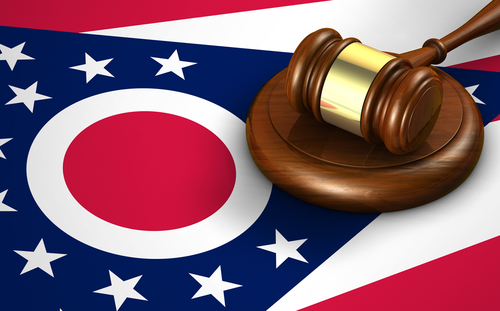How Can We Promote Greater Inventor Equity in U.S. Patenting? | Schwabe, Williamson & Wyatt PC
On April 17, 2024, I had the honor of moderating an online panel entitled “Promoting Inventor Equity in Patenting”—part of the OHSU Innovates series hosted by the OHSU Technology Transfer office and OHSU Collaborations and Entrepreneurship team. The panelists addressed the clear need to raise the proportion of women and racial minorities who apply for and are awarded patents for their inventions.
To discuss, OHSU Innovates brought together:
- Carmem Pfeifer, professor of restorative dentistry, Division of Biomaterials and Biomechanics at the OHSU School of Dentistry, who owns one patent and has others in process
- Ruchi Thanawala, assistant professor of surgery in the Division of Cardiothoracic Surgery, OHSU School of Medicine, and the main inventor on four patents
- Anne Carlson, associate director of technology development and licensing, a former post-doctoral researcher and research biologist who soon shifted into doing patent agent work, specializing in biotechnology patent law
Data from the U.S. Patent and Trademark Office (USPTO) indicate that in 2019, patents issued to women amounted to 12.8% of the whole, and teams that won patents with at least one woman named as an inventor were only 22% of all patents awarded that year. A 2010 study found that between 1970 and 1986, patents were granted to Black inventors at a rate of just 6 per million people, in contrast to an overall rate of 235 patents per million.
The panelists agreed that inequities in patent awards to minorities may be attributed to a variety of causes, ranging from geography and a simple lack of financial resources to intimidation by and lack of encouragement for science study in general as well as in the patent process. Continuing low proportions of women and racial minorities in executive and other leadership roles also affect who innovates, who gets credit, and who gets mentored.
Carmem Pfeifer referred to a lack of training in innovation itself. When you’ve been working as a clinician in a lab, in terms of innovation, “your mind doesn’t go there.” That’s also been my experience with software engineers, who tend to assume nothing they do is patentable. Pfeifer referred to the concept of the “leaky pipeline,” in which opportunities for involvement and support for women in STEM are missing throughout the process: Do you have contacts in the industry? Did your name go on the grant? Have you had mentors?
All agreed that mentorship is crucial, but the situation has improved in this respect. People get boxed into certain roles, and then are not expected to participate in the larger conversation. Just the patent application process itself is complex and intimidating, Carlson noted, so mentorship can help with that as well as innovation in general. Clinicians tend to presume they have to have everything figured out and perfectly packaged before they take the first step to apply for a patent, and don’t understand you can start with a promising idea and hammer out details with the support and advice of others along the way.
Everyone agreed that gathering more bibliographic information, even by the USPTO on patent applications, would be helpful. The more data we have, the better we may quantify where the inequities lie, Ruchi Thanawala commented, and thereby how to direct limited resources. She also recommended outreach beyond both companies and adults; to push STEM for high school students and explain what inventorship entails, “so innovation is driven by individuals, and not just by companies and organizations.”
Even when excellent resources are readily available, such as mentors and in-house expertise to support innovators through patenting, organizations should notice when the same small pool of inventors keep turning up, and look further, Thanawala said. “The strength and the value is in the negative space.”
Among the key takeaways:
- A Rise in Patent Invalidation Discourages Newcomers. A serious factor that likely discourages innovators outside the entrepreneurial hot zones of the coasts, Texas, and portions of the Great Lakes and Rocky Mountains, is that the patent office invalidates the claims of 50-80% of issued patents by accused infringers that are challenged. Companies will sue for patent infringement, and even a theoretically defensible patent can be invalidated if it wasn’t written by a proficient attorney. The patent owner may lack the resources and know-how to enforce it. Plus, none of the fees that were paid to obtain the issued patent will be refunded. One client I worked with whose patent was overturned regarded this as an illegal taking.
- An Inventor Feedback Loop Could Help Give Fair Credit to Patent Work. The panel raised a novel idea for capturing and apportioning proper credit for new ideas that get patented with a sort of “feedback loop.” As the initial work progresses, compile a complete roster of everyone who contributes to the development of an invention. Then, at the start of the application for a patent, distribute the list to all members in the responsible group. The group can then decide which names should remain and become listed as inventors on the patent. Those who did not make the cut could explain how they helped in the conception and therefore should remain listed as an inventor—to create an inventor feedback loop.
The “grey area” between inventor/conceiver and researcher/implementor (a more traditional role among women and minorities), plus the time it takes for an idea to be published as a patent application, too often means that some would-be inventors are left out of being named on the patent. It can be difficult, if not impossible, for a contributor to determine if they contributed to the conception of the patent claims, let alone defend their role after the fact.
A “feedback loop” approach would add to a range of suggestions that have been offered in the past to boost gender and racial equity in innovation and patenting—from changing the language with respect to the invention disclosure process (from “invention” to “solution,” for example) and opening regional offices of the USPTO, to greater support for pro se inventors (people who file their own patent applications without legal representation).






